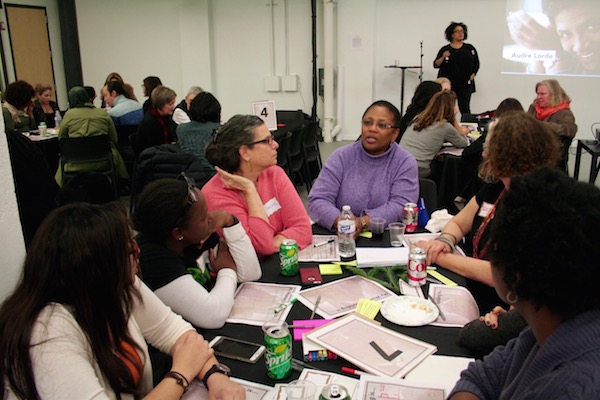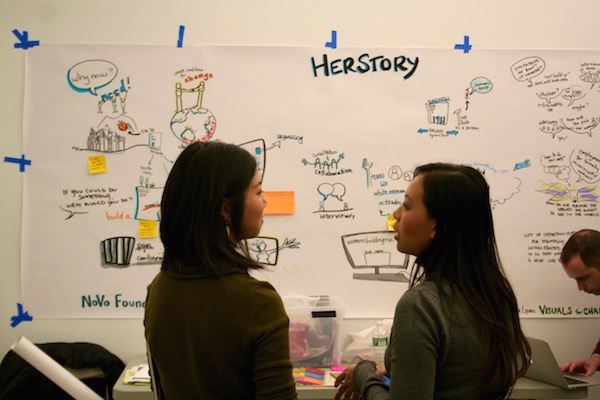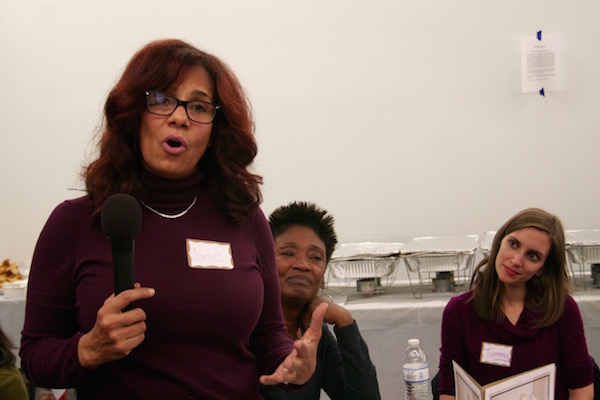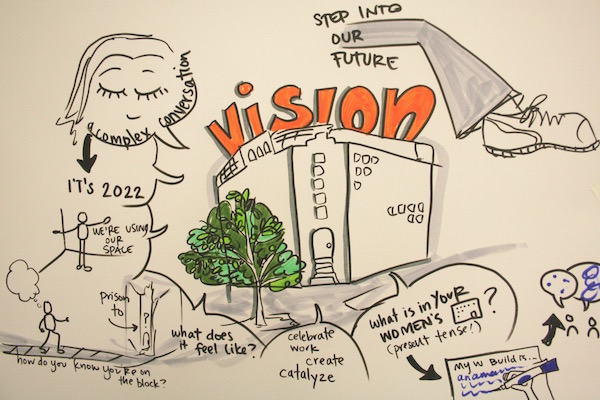
BY YANNIC RACK | A place where women were once imprisoned will soon offer them a safe haven for advocacy.
The former Bayview Correctional Facility in Chelsea is being turned into New York’s first Women’s Building, a new home for the global women’s rights movement, and activists and organizers working around the world came together this week to discuss its future.
“It’s not often that we’re invited to dinner to dream, and to dream big and about something that will actually happen,” said Maura Bairley, an activist and anti-violence educator who moderated the December 1 event, one of two community conversations aimed at gathering ideas for the center’s use (the other was held the following day, in Brooklyn).
The occasion attracted dozens of women — and a handful of men — who were eager to share their thoughts on how the building should be transformed.
“We are envisioning a sort of vertical neighborhood where women leaders can connect with each other in very powerful ways,” said Pamela Shifman, the executive director of the NoVo Foundation, which is leading the Women’s Building project.
Originally built as a waterfront YMCA in 1931, Bayview was shuttered before Superstorm Sandy hit New York in October 2012, and never reopened.
Once completed in the next four to five years, it will host a range of nonprofit women’s organizations, and will likely also include a restaurant, an art gallery, and some additional offices for other tenants.

Ideas for what the rest of the space could be used for were anything but scarce at the community forum, which was held at the Agnes Varis Center for the Performing Arts, a dance school on Broadway in Lower Manhattan.
The suggestions, collected in individual discussion groups, included building greenhouses or a farm on the roof, opening a childcare or wellness center, offering arts and performance spaces, and establishing a ground floor retail section that could employ victims of human trafficking.
“We want to take away the darkness of this building,” one woman told the audience. “This should be a safe space for women everywhere,” said another.
Shifman cautioned that there was limited space available and that some features of the building, like an indoor pool, would have to be preserved.

“We’re required to maintain some historical aspects,” she said, in a comment that should please many local community leaders who have long pushed for landmark status for the building.
Goren Group, a woman-owned and operated real estate development company, is developing the property, and a design competition was recently launched to find an architect for the project.
The building, originally conceived as a YMCA for merchant sailors working on the Chelsea waterfront, features distinctive masonry work, terra cotta detailing, and nautical references. According to the listing for the competition, the design team will work closely with New York’s State Historic Preservation Office to preserve and restore the historical elements of the building.
Shifman also noted that the foundation was “very committed” to keeping a part of the structure as a memorial to its past as a prison, even though the project was all about moving in the opposite direction.
“We felt that it was an opportunity to turn a place which was about pain and confinement into a place that is about justice and liberation and freedom,” she said.
One of the women at the event said she wholeheartedly agreed with the transformation of the prison — not least because she was once incarcerated there herself.
“I just think this is very exciting,” said Janet Taveras, who spent several months at Bayview when she was temporarily transferred there from another upstate prison in 1992.
“I remember being there, and I don’t know what floor I was on but I know that the cell I was in faced the highway. I remember looking out that window and saying, ‘God, how life goes on, and I’m locked up in here.’ So [I imagine] a way to lift that sad spirit that is in that building,” she said.

Taveras now works for STEPS, which offers support for victims of gender-based violence, and said she hoped the organization could find a place in the Women’s Building once it was up and running.
“Hopefully, when they build it, I will be able to look through a window in there,” she told Chelsea Now. “But it will be different, because there won’t be no bars.

















